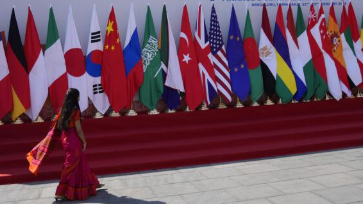

Bhubaneswar: In an era when the Indian diaspora spans practically every corner of the globe—with over 32 million Non-Resident Indians (NRIs) forming the world's largest overseas community—a handful of nations remain virtually untouched by Indian migration. These countries represent the final frontiers for a diaspora known for its global reach and entrepreneurial spirit.
North Korea stands as perhaps the most prominent example of a nation without a significant NRI presence. The hermetically sealed Democratic People's Republic of Korea maintains strict control over immigration, with foreign residents limited primarily to diplomatic personnel and a small number of authorized workers from China and Russia. The country's isolation, restrictive policies, and challenging economic conditions effectively prevent the establishment of an Indian community.
"North Korea's self-imposed isolation creates a scenario where traditional diaspora communities simply cannot take root," explains Dr. Rajiv Malhotra, a specialist in global migration patterns. "Their restricted visa policies and limited diplomatic relations with India make it nearly impossible for Indians to settle there, even temporarily."
Several small Pacific island nations also lack established NRI communities. Countries like Tuvalu, Nauru, and Kiribati—despite maintaining diplomatic relations with India—have seen minimal Indian settlement due to their remote locations, small economies, and limited opportunities for the professional sectors where Indian expatriates typically excel.
The Marshall Islands, with a population under 60,000 and an economy heavily dependent on U.S. aid, has virtually no permanent Indian residents. Similarly, the Federated States of Micronesia has recorded fewer than 10 Indian nationals residing there in recent years.
"The absence of Indian communities in these Pacific microstates reflects both practical barriers and limited incentives," notes Dr. Ananya Sen, author of 'Global Indians: Migration Patterns in the 21st Century.' "When you consider the geographic isolation, limited economic opportunities, and the absence of established diaspora networks that typically facilitate migration, it's understandable why these nations remain off the NRI map."
Some closed societies in Central Asia also report minimal Indian presence. Turkmenistan, known for its restrictive visa policies and tightly controlled society, hosts only a handful of Indian nationals, primarily connected to diplomatic missions or specific energy sector projects. Despite growing Indo-Turkmen relations in recent years, particularly regarding energy cooperation, a permanent Indian community has not materialized.
"Countries like Turkmenistan present a particular set of challenges," explains former Indian diplomat Rakesh Sood. "While there are growing bilateral relations, the country's restrictive domestic policies, limited private sector, and complex bureaucracy create significant barriers for potential migrants."
Certain European microstates also lack established Indian communities. While Monaco attracts global wealth, its tiny size (less than one square mile), extraordinarily high cost of living, and specific residency requirements have resulted in little Indian settlement. Similarly, Liechtenstein, with its population of just 38,000 and specialized banking-focused economy, has recorded fewer than 20 Indian residents.
The Vatican City, the world's smallest sovereign state, houses primarily clergy and those directly serving the Holy See, with no permanent Indian residents outside of any Indian clergy serving there.
Several factors contribute to the absence of Indian communities in these nations:
Economic incompatibility often tops the list. The Indian diaspora typically thrives in countries with robust economies offering opportunities in sectors like technology, medicine, engineering, and business—areas often underdeveloped in the nations mentioned.
Political isolation plays a crucial role, particularly for countries like North Korea, where strict immigration controls and limited diplomatic ties create insurmountable barriers.
Geographic remoteness, particularly for Pacific island nations, increases migration costs and decreases attractiveness for potential settlers.
Cultural and linguistic barriers can also limit migration. Communities that provide few compatriots, unfamiliar cultural systems, and languages with limited global reach present additional challenges.
"These diaspora deserts tell us something interesting about migration patterns," observes migration sociologist Priya Deshpande. "Indians tend to migrate strategically, favoring destinations with established networks, compatible economies, and relatively open societies. The absence of Indian communities in certain countries isn't random—it reflects a rational assessment of opportunity versus challenge."
As India continues its rise as a global power with expanding economic and diplomatic reach, some of these migration gaps may eventually close. Recent bilateral agreements with Pacific nations and growing energy partnerships with Central Asian states could potentially create inroads for small pioneer communities of Indian professionals and entrepreneurs.
However, the most isolated nations—particularly North Korea—will likely remain beyond the reach of significant Indian settlement for the foreseeable future, standing as rare exceptions to India's otherwise truly global diaspora.
"What's remarkable isn't that a few nations lack Indian communities," concludes Dr. Malhotra, "but rather how few such nations exist. The Indian diaspora's global footprint is truly exceptional—covering virtually every economically viable and politically accessible corner of the world."